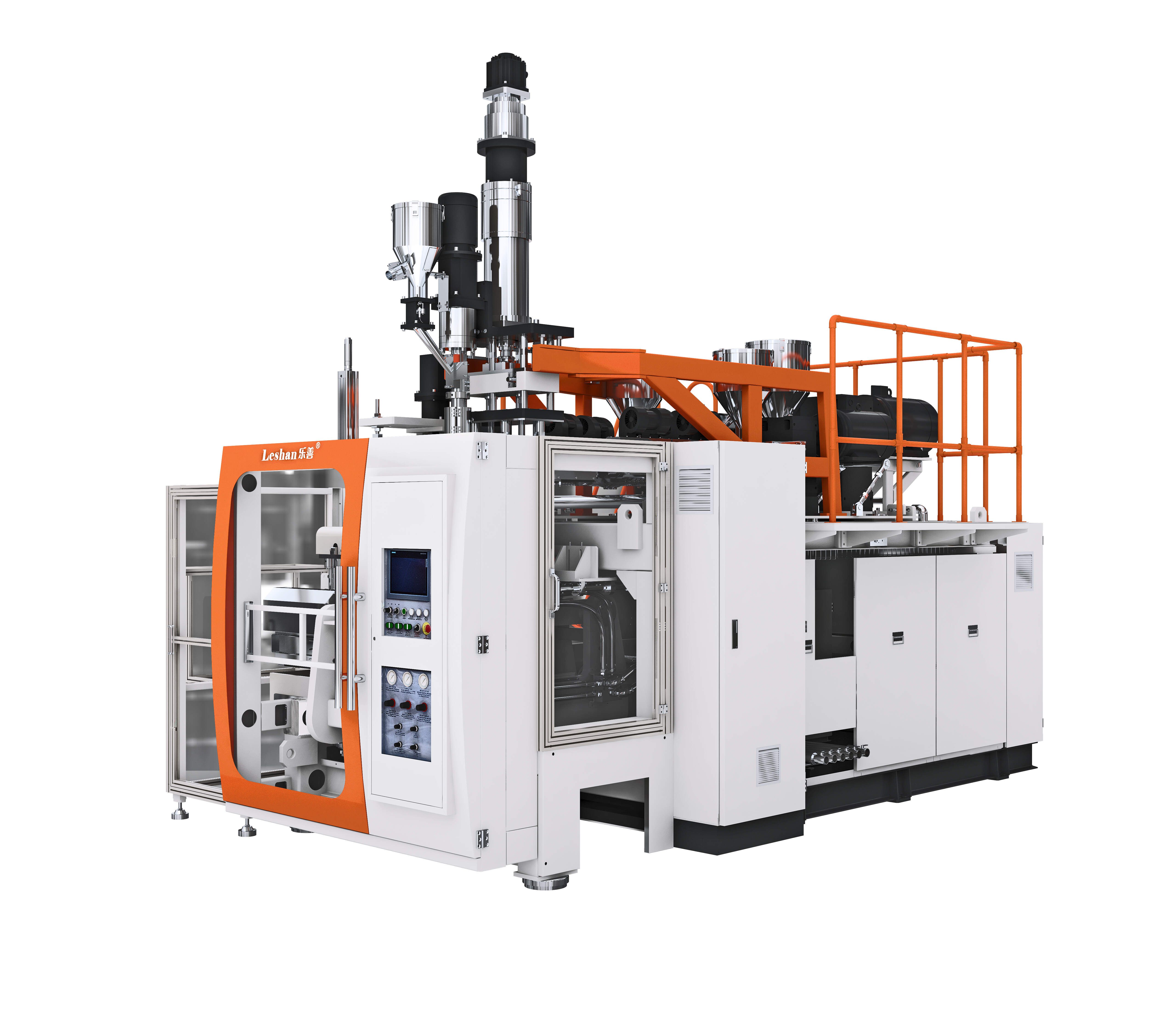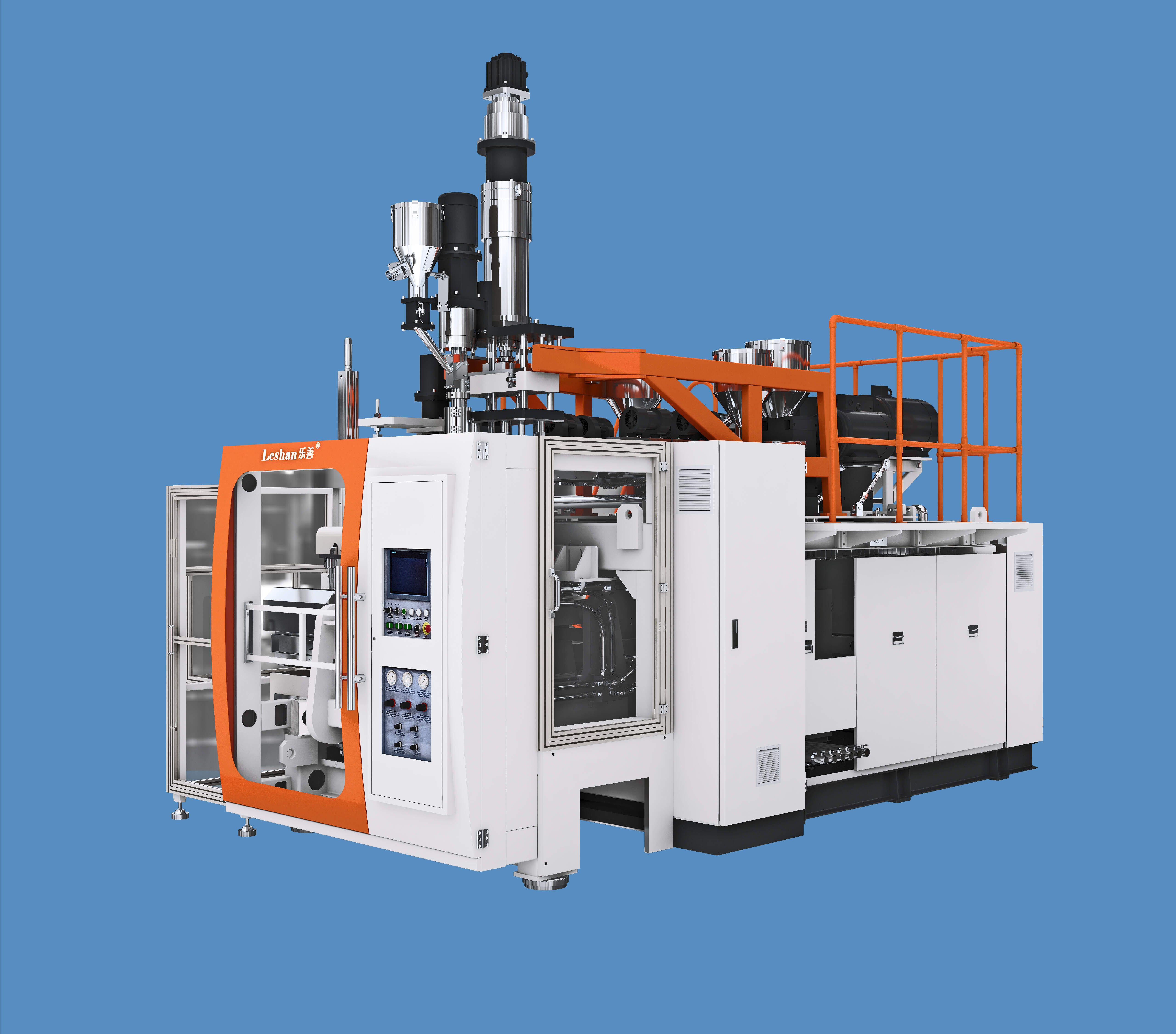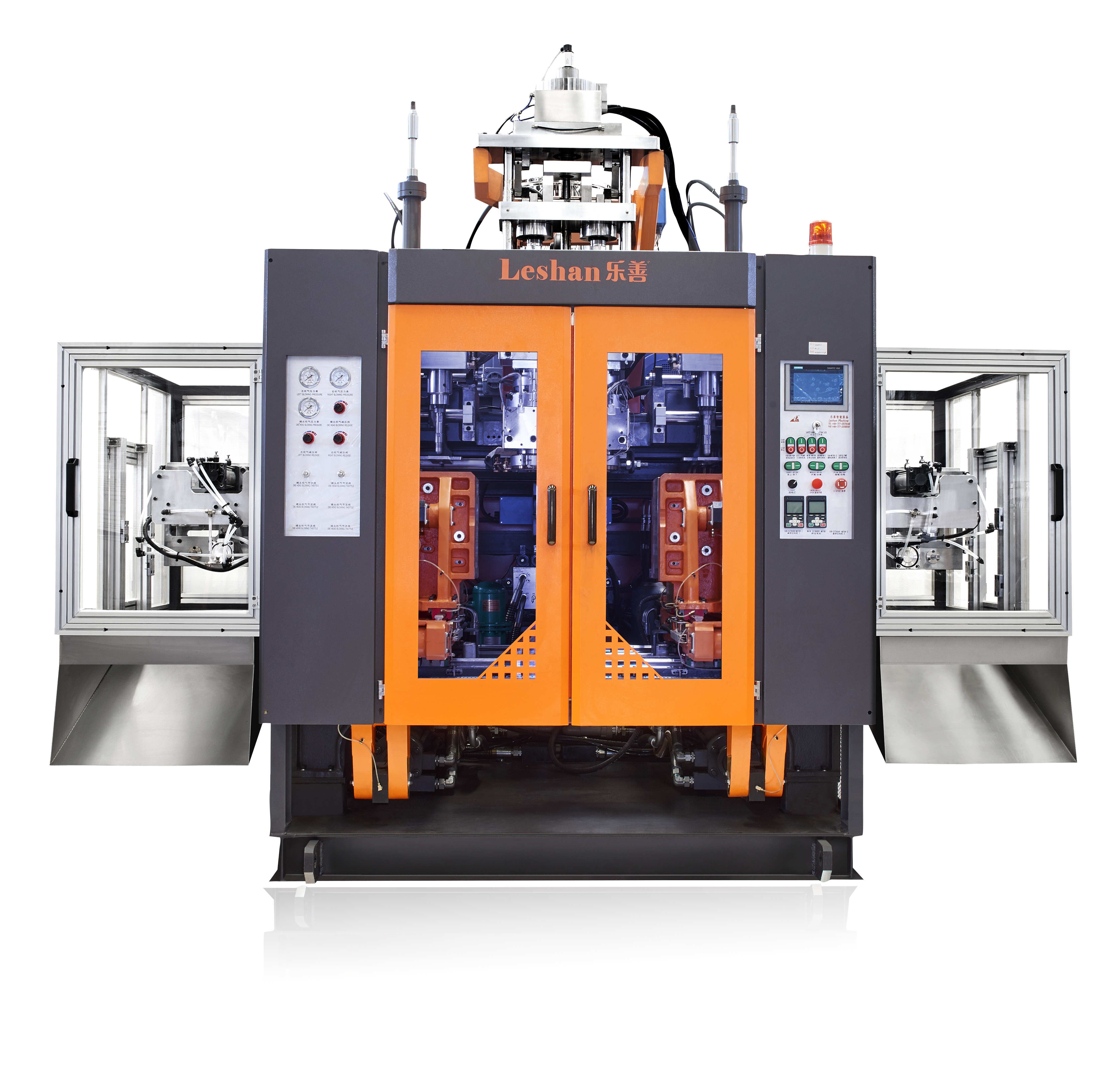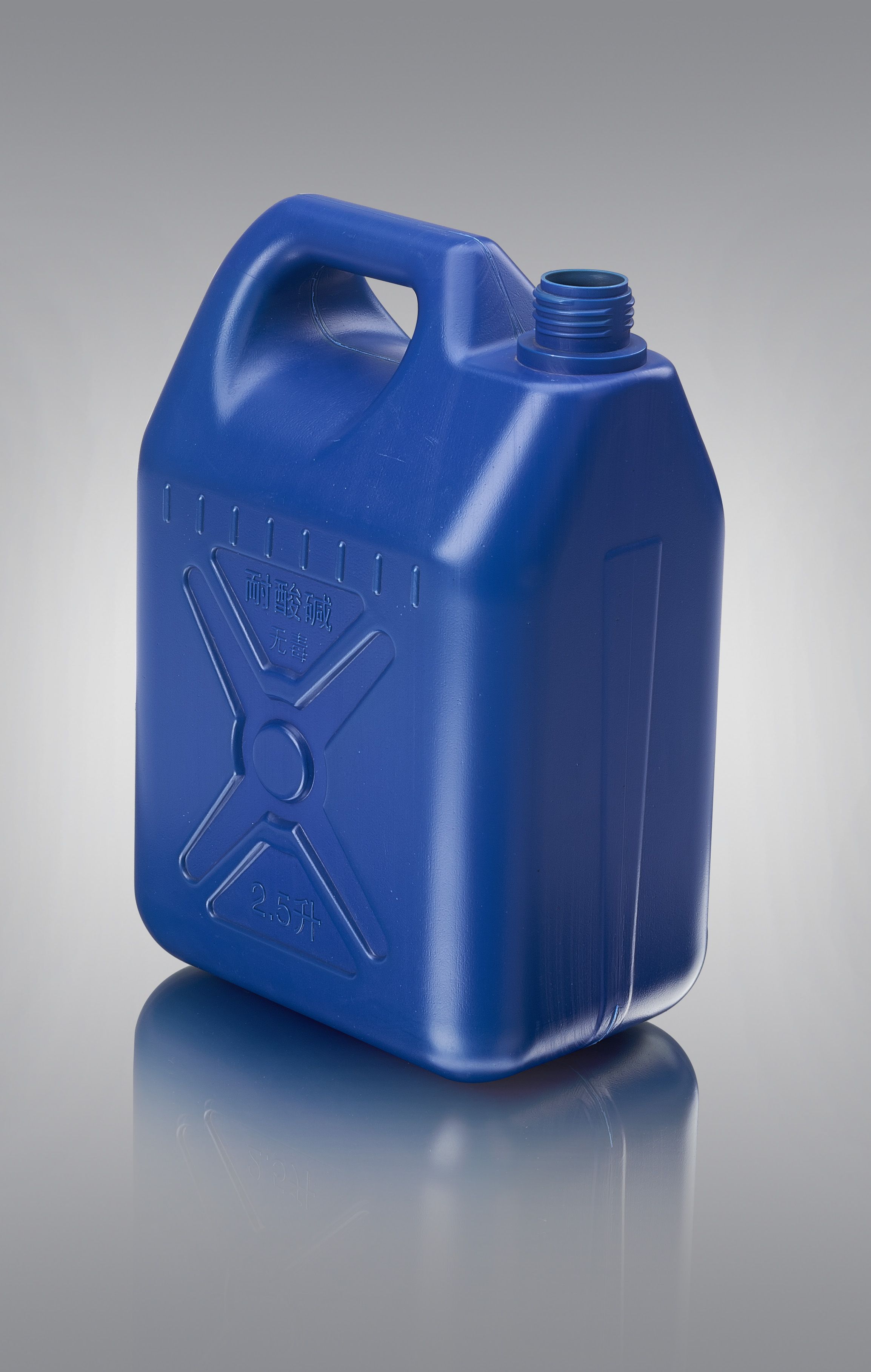
Auto Hot Fill Blow Molding Machine
Auto Hot Fill Blow Molding Machine
Leshan Intelligent Equipment Corp.,Ltd is a professional manufacturer of blow molding machines that integrates research and development, design, manufacturing, technical services, and marketing. The company is located in Foshan, Guangdong, adjacent to large and medium-sized cities such as Shenzhen, Guangzhou, and Dongguan. Our products include athlon series hydraulic machine,Daily chemistry bottle blow molding machine,Blowing Mould & Injection Mould,Engine oil bottle blow molding machine,multi-layer coextrusion blow molding machine,Extrusion Die Head,Chemical barrel blow molding machine,Cleaning bottle blow molding machine,Food bottle blow molding machine,Milk bottle blow molding machine,Auxiliary machine, etc.
The company's factory covers an area of over 10000 square meters and has over 300 technical and staff members. We are still adopting international standards and ISO9001:2012 quality management system in production. Therefore, the production quality, efficiency, energy consumption, and control maintenance of Leshan blow molding machines are among the top in the domestic industry, and their sales are far ahead of the domestic industry.
| Parameter | Information |
| Product Name | auto hot fill blow molding machine |
| Place of Origin | Foshan,Guangdong |
| Brand Name | Leshan |
| Condition | New |
| Video outgoing-inspection | Provided |
| Machinery Test Report | Provided |
| Warranty of core components | 1 year |
| Warranty | 1year |
| Port | ShunDe/GuangZhou/ShenZhen China |
| Application | Bottle |
| Core Components | Gear,Motor,Engine,Bearing,PLC,Pressure vessel...etc |
| Color | customized |
| Plastic Processed | HDPE,Polystyrene,PE,PA,PC,PP,PVC...etc |
| Certification | CE,ISO9001:2012... |
| PLC Brand | Siemens |
| Packaging Details | Standard exporting machine packing with plastic film |
| Service | Field maintenance and repair service |
| Automation | Automation |
| Supply Ability | 500 Set/Sets per year |
| Lead time (days) | 70 (To be negotiated) |
Please note: The above table data is for reference only. For specific information, please contact us.

auto hot fill blow molding machine also offer flexibility and scalability. It can adjust the production process and parameters according to production needs to meet different product requirements. At the same time, the blow molding machine also has extension functions. By adding additional devices, it can realize bottle mouth separation, label attachment and other processing to meet the application needs of more fields.

auto hot fill blow molding machine---FAQs Guide
2.What's the difference between a double-working blow molding machine and a simplex blow molding machine?
3.What materials can be used to manufacture auto hot fill blow molding machine?
4.What waste materials will be generated during the production process of auto hot fill blow molding machine?
5.How does the extrusion blow molding process differ from injection blow molding, and what types of products are typically produced using each method?
6.What are the general raw materials for auto hot fill blow molding machine?
7.How to design and customize auto hot fill blow molding machine?
8.What are the safety standards for auto hot fill blow molding machine?
9.How to maintain the stability of auto hot fill blow molding machine?
10.Can I make milk bottle on this machine?
11.How to optimize the efficiency of plastic blow molding machine?
12.How do auto hot fill blow molding machine manufacturers control variables like temperature, pressure, and blow time in the blow molding process to ensure consistent product quality?
1.What products are typically manufactured using auto hot fill blow molding machine?
Our products & services cover a wide range of areas and meet the needs of different fields.
1. Plastic bottles and containers: Blow molding machines are commonly used to produce plastic bottles and containers of various sizes and shapes, such as water bottles, shampoo bottles, and food containers.
2. Automotive components: Many automotive parts, such as fuel tanks, air ducts, and bumpers, are manufactured using blow molding machines.
3. Toys: Blow molding machines are used to produce a wide range of plastic toys, including balls, action figures, and building blocks.
4. Household products: Items such as laundry baskets, storage bins, and trash cans are often made using blow molding machines.
5. Medical equipment: Many medical devices, such as IV bags, syringes, and respiratory masks, are manufactured using blow molding machines.
6. Packaging materials: Blow molding machines are used to produce packaging materials such as plastic bags, pouches, and containers for food and other consumer products.
7. Industrial and agricultural products: Large containers, drums, and tanks used in industrial and agricultural settings are often made using blow molding machines.
8. Sports equipment: Blow molding machines are used to produce a variety of sports equipment, including footballs, soccer balls, and hockey sticks.
9. Furniture: Some types of furniture, such as chairs and tables, are made using blow molding machines to create lightweight and durable plastic components.
10. Construction materials: Blow molding machines are used to produce pipes, tubes, and other construction materials made from plastic.
2.What's the difference between a double-working blow molding machine and a simplex blow molding machine?
The output demand of the same kind of product is big, choose double station blow molding machine.Single product demand is small, choose simplex blow molding machine.
3.What materials can be used to manufacture auto hot fill blow molding machine?
We should enjoy a good reputation in the industry, and we can increase the added value of the products of cooperative customers through technological innovation.
1. Steel: The main structural material used in blow molding machines is steel, which provides strength and durability to the machine.
2. Aluminum: Some parts of the machine, such as the extruder, may be made from aluminum due to its lightweight and corrosion-resistant properties.
3. Plastic: The molds used in blow molding machines are typically made from plastic, such as high-density polyethylene (HDPE) or polypropylene (PP).
4. Rubber: Rubber is used for seals and gaskets in the machine to prevent leakage and ensure airtightness.
5. Brass: Brass is used for valves and fittings in the machine due to its corrosion resistance and ability to withstand high temperatures.
6. Copper: Copper is used for electrical components and wiring in the machine due to its good conductivity.
7. Stainless steel: Some parts of the machine, such as the heating elements, may be made from stainless steel due to its resistance to corrosion and high temperatures.
8. Glass: Glass is used for the viewing window on the machine, allowing operators to monitor the production process.
9. Ceramic: Ceramic is used for heating elements and insulation in the machine due to its ability to withstand high temperatures.
10. Composites: Some parts of the machine, such as the control panel, may be made from composite materials, which offer a combination of strength, durability, and lightweight properties.
4.What waste materials will be generated during the production process of auto hot fill blow molding machine?
Our company has many years of auto hot fill blow molding machine experience and expertise.
1. Plastic waste: Blow molding machines use plastic materials such as polyethylene (PE), polypropylene (PP), and polyethylene terephthalate (PET) to produce plastic products. These materials are often left as waste after the production process.
2. Scrap plastic: During the production process, there may be excess or defective plastic parts that are not suitable for use. These scraps are considered waste and need to be properly disposed of.
3. Residual materials: Some materials, such as colorants and additives, may be left over after the production process. These materials may also be considered waste and need to be disposed of properly.
4. Packaging waste: Blow molding machines often require packaging materials such as cardboard boxes, plastic bags, and bubble wrap for shipping and storage. These materials can generate waste during the production process.
5. Cleaning waste: Blow molding machines need to be cleaned regularly to maintain their efficiency. This process can generate waste such as cleaning agents, rags, and other materials.
6. Energy waste: The production process of blow molding machines requires energy, which can result in waste in the form of emissions and by-products.
7. Water waste: Some blow molding machines use water for cooling or lubrication purposes. This water may become contaminated during the production process and need to be properly treated before disposal.
8. Metal waste: Some blow molding machines may use metal components, such as molds and machine parts, which can generate metal waste during the production process.
9. Hazardous waste: Some materials used in blow molding machines, such as solvents and chemicals, may be hazardous and require special handling and disposal methods.
10. Electronic waste: Blow molding machines may also contain electronic components that can become obsolete or damaged during the production process, resulting in electronic waste.

5.How does the extrusion blow molding process differ from injection blow molding, and what types of products are typically produced using each method?
We have been working hard to improve service quality and meet customer needs.
Extrusion blow molding and injection blow molding are two different processes used to manufacture plastic products. While both methods involve melting plastic and shaping it into a desired form, there are some key differences between the two.
Extrusion blow molding is a process in which a molten tube of plastic, called a parison, is extruded through a die and then inflated to form a hollow product. The parison is then cooled and the mold opens to release the finished product. This process is commonly used to produce bottles, containers, and other hollow objects.
On the other hand, injection blow molding involves injecting molten plastic into a mold cavity, where it is then cooled and solidified. The mold then opens to release the finished product. This process is commonly used to produce small, complex, and precise products such as medical devices, pharmaceutical packaging, and small bottles.
One of the main differences between the two processes is the way the plastic is shaped. In extrusion blow molding, the plastic is shaped by the inflation of the parison, while in injection blow molding, the plastic is shaped by the mold cavity.
Another difference is the type of molds used. In extrusion blow molding, the molds are typically made of two halves that come together to form the desired shape. In injection blow molding, the molds are usually made of a single piece that is opened and closed to release the product.
The type of plastic used also differs between the two processes. Extrusion blow molding is typically used for high-density polyethylene (HDPE) and polyethylene terephthalate (PET) plastics, while injection blow molding is commonly used for polypropylene (PP) and polyethylene (PE) plastics.
In terms of product applications, extrusion blow molding is commonly used for larger, more simple products such as bottles and containers, while injection blow molding is used for smaller, more complex products such as medical devices and pharmaceutical packaging.
In summary, extrusion blow molding and injection blow molding are two different processes used to manufacture plastic products. While both methods involve melting plastic and shaping it into a desired form, they differ in the way the plastic is shaped, the type of molds used, and the types of products produced.
6.What are the general raw materials for auto hot fill blow molding machine?
We pay attention to employee development and benefits, and provide a good working environment in order to improve the efficiency of employees and improve the quality management of auto hot fill blow molding machine products.
1. Plastic Resin: The most common raw material used in blow molding machines is plastic resin, which is melted and formed into a hollow tube to create the desired shape.
2. Colorants: Colorants are added to the plastic resin to give the final product its desired color.
3. Additives: Additives such as UV stabilizers, antioxidants, and flame retardants may be added to the plastic resin to improve the properties of the final product.
4. Compressed Air: Compressed air is used to inflate the plastic tube and shape it against the mold.
5. Mold Release Agents: Mold release agents are used to prevent the plastic from sticking to the mold during the molding process.
6. Lubricants: Lubricants are used to reduce friction between the plastic and the mold, making it easier to remove the final product.
7. Cooling Water: Cooling water is used to cool the plastic and solidify it into the desired shape.
8. Mold Inserts: Mold inserts are used to create specific features or details on the final product.
9. Labels and Packaging Materials: Labels and packaging materials may be added to the final product after it has been molded.
10. Recycled Materials: Some blow molding machines may also use recycled plastic materials as a raw material, reducing waste and promoting sustainability.
7.How to design and customize auto hot fill blow molding machine?
We actively participate in the auto hot fill blow molding machine industry associations and organization activities. The corporate social responsibility performed well, and the focus of brand building and promotion
Designing and customizing blow molding machines involves several steps and considerations. Here are some steps to follow:
1. Identify the type of blow molding machine needed: There are different types of blow molding machines, such as extrusion blow molding, injection blow molding, and stretch blow molding. Each type has its own unique features and capabilities, so it is important to determine the specific type of machine needed for the desired application.
2. Determine the production requirements: The production requirements, such as the desired output, bottle size and shape, and material type, will help determine the specifications and features of the machine.
3. Select the appropriate components: The components of a blow molding machine include the extruder, mold, clamping system, and control system. Each component should be carefully selected based on the production requirements and the type of machine.
4. Consider the material and design of the mold: The mold is a crucial component of a blow molding machine as it determines the shape and size of the final product. The material and design of the mold should be chosen based on the type of material being used and the desired product specifications.
5. Customize the control system: The control system is responsible for the operation and monitoring of the machine. It should be customized to meet the specific production requirements and to ensure efficient and safe operation.
6. Incorporate safety features: Safety should be a top priority when designing and customizing blow molding machines. Safety features such as emergency stop buttons, safety guards, and sensors should be incorporated into the design to prevent accidents and ensure the safety of operators.
7. Test and optimize the machine: Once the machine is designed and assembled, it should be thoroughly tested to ensure it meets the production requirements and operates efficiently. Any necessary adjustments or optimizations should be made before the machine is put into full production.
8. Provide training and support: It is important to provide training and support to operators and maintenance personnel to ensure they are familiar with the machine and can operate and maintain it properly.
In addition to these steps, it is important to work closely with a reputable manufacturer or supplier who has experience in designing and customizing blow molding machines. They can provide valuable insights and expertise to help create a machine that meets your specific needs and requirements.
8.What are the safety standards for auto hot fill blow molding machine?
We are a new auto hot fill blow molding machine manufacturer.
1. Electrical Safety: Blow molding machines should comply with all relevant electrical safety standards, such as the National Electrical Code (NEC) and the International Electrotechnical Commission (IEC) standards.
2. Machine Guarding: All moving parts of the machine should be guarded to prevent accidental contact and injuries. The guards should be securely fixed and not easily removable.
3. Emergency Stop: The machine should have an easily accessible emergency stop button that can quickly shut down the machine in case of an emergency.
4. Lockout/Tagout: The machine should have a lockout/tagout system in place to prevent accidental start-up during maintenance or repair.
5. Pressure Relief: Blow molding machines use high-pressure air to mold plastic, so they should have a pressure relief system in place to prevent over-pressurization and potential explosions.
6. Material Handling: The machine should have a safe and efficient material handling system to prevent injuries and accidents during the loading and unloading of materials.
7. Noise Control: Blow molding machines can produce high levels of noise, so they should have noise control measures in place to protect workers' hearing.
8. Fire Safety: The machine should have fire safety measures in place, such as fire extinguishers and fire alarms, to prevent and control fires.
9. Operator Training: All operators should receive proper training on how to operate the machine safely and be aware of potential hazards.
10. Regular Maintenance: The machine should undergo regular maintenance and inspections to ensure it is in good working condition and meets all safety standards.

9.How to maintain the stability of auto hot fill blow molding machine?
We enjoy high authority and influence in the industry and continue to innovate products and service models.
1. Regular Maintenance: Regular maintenance is crucial for the stability of blow molding machines. This includes cleaning, lubricating, and inspecting the machine on a regular basis. Any worn or damaged parts should be replaced immediately to prevent further damage.
2. Proper Training: Ensure that all operators are properly trained on how to operate the blow molding machine. This will help prevent any accidents or damage to the machine due to operator error.
3. Use Quality Materials: The quality of the materials used in the blow molding process can affect the stability of the machine. Using high-quality materials will reduce the risk of machine breakdowns and improve the overall performance.
4. Monitor Machine Performance: Keep a close eye on the performance of the machine. This includes monitoring the temperature, pressure, and speed of the machine. Any abnormalities should be addressed immediately to prevent further damage.
5. Regular Inspections: Regularly inspect the machine for any signs of wear and tear. This will help identify any potential issues before they become major problems.
6. Follow Manufacturer's Guidelines: Follow the manufacturer's guidelines for operating and maintaining the machine. This will ensure that the machine is being used correctly and will help prolong its lifespan.
7. Keep the Machine Clean: A clean machine is less likely to experience breakdowns. Regularly clean the machine and remove any debris or dust that may have accumulated.
8. Proper Storage: When the machine is not in use, it should be stored in a clean and dry environment. This will help prevent any damage caused by moisture or dust.
9. Address Issues Immediately: If any issues arise with the machine, address them immediately. Ignoring problems can lead to more serious issues and can affect the stability of the machine.
10. Schedule Professional Servicing: It is important to schedule professional servicing of the machine on a regular basis. This will help identify any potential issues and ensure that the machine is running at its optimal performance.
10.Can I make milk bottle on this machine?
Yes, you can. Milk bottle,detergent bottle,pattern pot are available on the machine.
11.How to optimize the efficiency of plastic blow molding machine?
It can improve the blowing process, improve the cooling water transportation of the mold, improve the machine action time, improve the shape of the cup to make the material tube become even, thus reducing the molding cycle time of the product.
12.How do auto hot fill blow molding machine manufacturers control variables like temperature, pressure, and blow time in the blow molding process to ensure consistent product quality?
We pay attention to the transformation of intellectual property protection and innovation achievements. Your OEM or ODM order design we have a complete confidentiality system.
1. Temperature Control: Blow molding machines have heating elements that are used to heat the plastic material to a specific temperature before it is blown into the mold. The temperature is controlled by sensors and thermostats that monitor and adjust the temperature as needed. This ensures that the plastic material is at the optimal temperature for the blow molding process, which helps to produce consistent product quality.
2. Pressure Control: The pressure in the blow molding process is controlled by the air pressure in the mold. The blow molding machine has a pressure regulator that controls the amount of air that is blown into the mold. This pressure is monitored and adjusted to ensure that it is consistent throughout the molding process. This helps to ensure that the plastic material is evenly distributed and that the final product has consistent wall thickness.
3. Blow Time Control: The blow time refers to the amount of time that the air is blown into the mold to inflate the plastic material. This is a critical variable in the blow molding process as it determines the final shape and size of the product. Blow molding machines have timers that control the duration of the blow time, and these can be adjusted to ensure consistent product quality.
4. Process Monitoring: Blow molding machine manufacturers also use advanced process monitoring systems to track and control the variables in the blow molding process. These systems use sensors and software to monitor and adjust the temperature, pressure, and blow time in real-time. This helps to ensure that any variations in these variables are immediately detected and corrected, resulting in consistent product quality.
5. Quality Control: In addition to controlling the variables during the blow molding process, manufacturers also have quality control measures in place to ensure consistent product quality. This includes regular testing and inspection of the final products to check for any defects or variations. Any issues are identified and addressed to maintain the desired level of product quality.

Tags: blow molding machine usa,china auto blow molding machine,extrusion blow molding handbook,tool box blow molding machine
